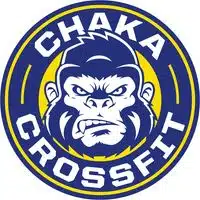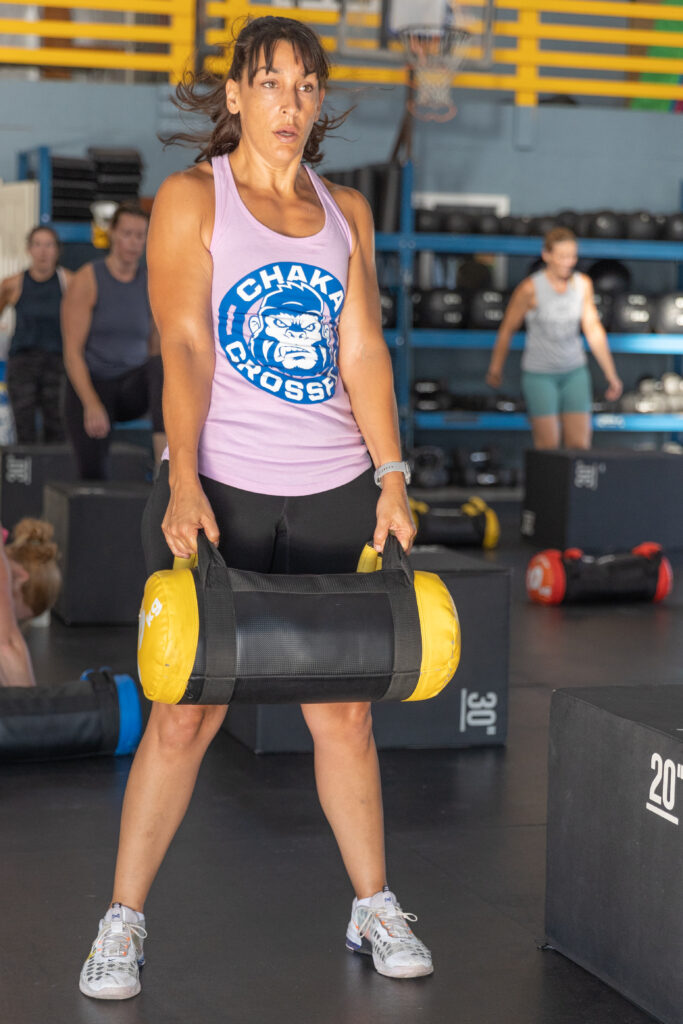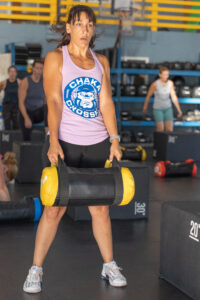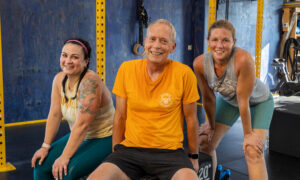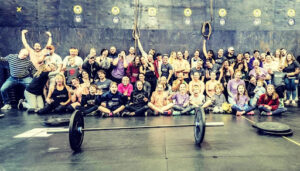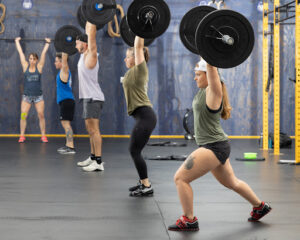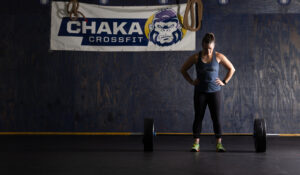Functional fitness movements are at the core of CrossFit training, offering a dynamic and effective way to improve overall strength, flexibility, and endurance. As a beginner looking to examine the world of CrossFit, understanding these functional movements is vital for a safe and successful training experience. This comprehensive guide will walk you through the fundamental functional fitness movements commonly used in CrossFit, providing detailed explanations and tips to help you master each exercise with confidence.
Key Takeaways:
- Functional fitness movements are designed to improve your overall body strength, agility, and endurance by focusing on exercises that mimic everyday activities.
- Common functional fitness movements in CrossFit training include squats, lunges, deadlifts, push-ups, pull-ups, and burpees, which engage multiple muscle groups and promote functional movement patterns.
- Working on proper form and technique is crucial when performing functional fitness movements to prevent injury and maximize the effectiveness of your workout.
Understanding Functional Fitness
What is Functional Fitness?
If you’re new to the world of fitness, you may have heard the term “functional fitness” being thrown around. Simply put, functional fitness refers to exercises that help you perform daily activities more efficiently and reduce the risk of injury. Unlike traditional weightlifting or bodybuilding, functional fitness movements focus on enhancing your overall strength, coordination, balance, and flexibility to improve your quality of life.
Core Elements of Functional Fitness Training
When considering functional fitness training, there are a few core elements that set it apart from other forms of exercise. These include exercises that mimic real-life movements, such as squats, lunges, and overhead presses, to improve your ability to perform everyday tasks. Functional fitness also emphasizes the importance of engaging multiple muscle groups simultaneously, promoting better coordination and balance.
Understanding the core elements of functional fitness training is crucial for beginners looking to get started in CrossFit. By incorporating these movements into your workout routine, you can build a strong foundation of functional strength that will benefit you both inside and outside the gym.
Types of Functional Fitness Movements
Even for beginners, understanding the different types of functional fitness movements is crucial for a successful CrossFit training experience. These movements can be broadly categorized into compound movements, isolation movements, and bodyweight exercises. Each type of movement serves a unique purpose in building strength, endurance, and overall fitness level.
Compound Movements
Compound movements involve multiple joints and muscle groups working together in a coordinated effort. These exercises mimic real-life movements and are necessary for building functional strength. Some common compound movements include squats, deadlifts, bench presses, and overhead presses.
Compound movements are highly efficient as they target several muscle groups at once, making them ideal for full-body workouts. It is important to perform compound movements with proper form to reduce the risk of injury and maximize the benefits of the exercise.
Isolation Movements
With isolation movements, the focus is on targeting a specific muscle group. Unlike compound movements, isolation exercises isolate a single joint and muscle, allowing for more precise muscle targeting. Examples of isolation movements include bicep curls, tricep extensions, and leg extensions.
It is important to incorporate isolation movements into your workout routine to strengthen individual muscles that may be underdeveloped. By targeting specific muscle groups, you can address imbalances and improve overall muscle tone and definition.
Bodyweight Exercises
Types of bodyweight exercises include push-ups, pull-ups, planks, and air squats. These exercises use the body’s weight as resistance and are excellent for building strength, agility, and endurance. Bodyweight exercises are versatile and can be performed anywhere, making them ideal for at-home workouts or when traveling.
Plus, bodyweight exercises help improve stability, balance, and core strength, making them necessary for functional fitness. By mastering bodyweight movements, you can enhance your overall athleticism and performance in other physical activities.
Essential Equipment for CrossFit Training
Despite the intensity and efficiency of CrossFit workouts, the required equipment is relatively minimal. Investing in a few key pieces can greatly enhance your training experience and performance. Here are some imperative items to consider for your CrossFit training regimen.
Free Weights and Barbells
Assuming you have access to a CrossFit gym or have set up a home gym, free weights and barbells are fundamental tools for building strength and power. These versatile pieces of equipment allow for a wide range of exercises such as squats, deadlifts, presses, and snatches. A barbell with a set of weight plates is imperative for most CrossFit workouts, as it helps in developing functional strength and improving overall fitness levels.
Kettlebells and Medicine Balls
Some of the most versatile pieces of equipment in CrossFit training are kettlebells and medicine balls. Kettlebells are excellent for developing strength, power, and endurance through dynamic movements like swings, cleans, and Turkish get-ups. Medicine balls are great for developing core strength, coordination, and explosive power. Incorporating these items into your workouts can add variety and challenge to your training routine.
Understanding how to use kettlebells and medicine balls properly is crucial to prevent injury and maximize the benefits of your training. Seek guidance from a certified CrossFit trainer or take a class to learn proper techniques and form for exercises with these tools. Start with lighter weights and gradually increase the intensity as you build strength and proficiency.
Gymnastic Rings and Pull-up Bars
Pullup bars and gymnastic rings are imperative for bodyweight exercises in CrossFit training. Pull-up bars are perfect for developing upper body strength and mastering the pull-up and muscle-up movements. Gymnastic rings offer a unique challenge for stabilizing muscles and improving coordination through exercises like ring dips, rows, and muscle-ups. Incorporating these tools into your workouts can help you progress in your bodyweight training and unlock new skills.
Equipment such as gymnastic rings and pull-up bars may seem intimidating at first, but with practice and proper progressions, you can enhance your strength and agility significantly. Start with simple exercises like ring holds or assisted pull-ups and gradually advance to more complex movements as you build confidence and skills.
Step-by-Step Guide to Basic Functional Movements
To ensure proper form and technique in CrossFit training, it is crucial to master the foundational functional movements. These movements are the building blocks for more complex exercises and are crucial for overall strength and conditioning. In this guide, we will break down some of the basic functional movements into easy-to-follow steps.
| The Squat Series | The Press Series |
|---|---|
| 1. Air Squat | 1. Shoulder Press |
| 2. Front Squat | 2. Push Press |
| 3. Overhead Squat | 3. Push Jerk |
The Squat Series: Air Squat, Front Squat, Overhead Squat
Some of the fundamental movements in CrossFit revolve around the squat series. The air squat, front squat, and overhead squat are crucial for building lower body strength, core stability, and overall mobility. Mastering these movements will lay a solid foundation for more advanced exercises.
The Press Series: Shoulder Press, Push Press, Push Jerk
Any efficient upper body workout in CrossFit involves the press series. Starting with the shoulder press, moving on to the push press, and finally the push jerk, these movements target the shoulders, triceps, and core. Learning proper form and technique in each of these exercises is key to preventing injury and maximizing performance.
Basic functional movements such as the press series are crucial for developing upper body strength and improving shoulder stability. These exercises also help in building muscle endurance and coordination, which are vital components of overall fitness.
The Lift Series: Deadlift, Sumo Deadlift High Pull, Medicine Ball Clean
There’s a critical emphasis placed on the lift series in CrossFit, focusing on exercises like the deadlift, sumo deadlift high pull, and medicine ball clean. These movements target the posterior chain, including the back, glutes, and hamstrings, while also incorporating explosive power and coordination. Mastering these lifts is crucial for improving overall strength and athletic performance.
Guide: By incorporating the lift series into your CrossFit routine, you can enhance your full-body strength, power, and explosiveness. These dynamic movements not only build muscle mass but also improve functional capacity, making them integral components of a well-rounded fitness program.
Tips for Beginners in CrossFit
Starting with the Basics
Your CrossFit journey should begin with mastering the fundamental movements. These basics include air squats, push-ups, sit-ups, and other bodyweight exercises that lay the foundation for more advanced routines.
Assume that you are building a house – without a solid foundation, the structure will not stand. Similarly, in CrossFit, having a strong grasp of the basic movements will set you up for success in more complex workouts.
Learning Proper Form and Technique
For new CrossFit enthusiasts, proper form and technique are paramount. It is imperative to learn how to perform each movement correctly to prevent injury and maximize results.
Another key aspect of CrossFit is functional movements. These exercises mimic everyday activities, enhancing your overall strength and fitness levels. By focusing on proper form, you will engage the right muscles and reduce the risk of straining or overloading certain areas of your body.
Establishing a Consistent Training Schedule
The key to progress in CrossFit is consistency. The most successful athletes in the sport maintain a regular training schedule to improve their endurance, strength, and skills.
For instance, aim to train at least 3-4 times a week to see significant improvements in your fitness level and performance. Consistency is key in CrossFit, as it allows your body to adapt and grow stronger over time.
Factors to Consider When Starting CrossFit
Keep these factors in mind when beginning your CrossFit journey to set yourself up for success.
Fitness Level and Goals
On your fitness level and goals, it is important to assess where you currently stand in terms of strength, endurance, and overall fitness. Consider what you want to achieve through CrossFit training, whether it’s weight loss, muscle gain, or overall improved fitness levels.
This evaluation will help you set realistic expectations and tailor your workouts to meet your specific needs. Note, CrossFit is scalable, so workouts can be modified to suit any fitness level and goal.
Nutrition and Recovery
Nutrition plays a crucial role in your CrossFit journey. Fueling your body with the right nutrients will not only improve your performance during workouts but also aid in recovery and muscle growth. Make sure to include a balance of protein, carbohydrates, and healthy fats in your diet to support your training.
The recovery aspect of CrossFit is just as important as the training itself. Proper rest, hydration, and sleep are key components of a successful CrossFit program. Listen to your body and allow it to recover and regenerate to prevent burnout and injury.
Scaling Workouts and Progressions
You have the ability to scale workouts and progressions in CrossFit to match your fitness level. If a workout feels too challenging, don’t be afraid to modify the movements or reduce the weight. It’s better to perform a scaled-down version of a workout with good form than to push yourself beyond your limits.
Note, progress takes time, so focus on gradually increasing the intensity and volume of your workouts as you become stronger and more comfortable with the movements. Celebrate small victories along the way and trust the process of improvement.
Recovery is an necessary component of any fitness regimen, especially in CrossFit where workouts can be intense and demanding. Make sure to prioritize rest days, mobility work, and recovery modalities such as foam rolling and stretching to prevent injury and optimize performance.
The Pros and Cons of CrossFit Training
Many individuals are drawn to CrossFit training for its intense and varied workout routines that challenge both the body and mind. However, like any fitness program, CrossFit has its own set of advantages and disadvantages that should be considered before venturing into this high-intensity training regimen. Let’s take a closer look at the pros and cons of CrossFit training:
| Advantages | Disadvantages |
| Improves cardiovascular health | Potential for overtraining and burnout |
| Builds strength and endurance | Risk of injury if proper form is not maintained |
| Community support and motivation | Expensive membership fees at some CrossFit gyms |
| Encourages functional movements | Competitive nature may lead to pushing beyond limits |
| Scalable workouts for all fitness levels | Time commitment for frequent training sessions |
Advantages of High-Intensity Functional Workouts
Little is more effective than high-intensity functional workouts when it comes to torching calories, building strength, and improving overall fitness levels. CrossFit training incorporates movements that mimic everyday activities, making it a practical approach to fitness that can translate into real-world strength and agility. The constantly varied workouts keep boredom at bay and challenge your body in new ways, preventing plateaus and promoting continuous progress.
Additionally, the group setting of CrossFit classes fosters a sense of community and support that can be incredibly motivating. Working out alongside like-minded individuals who are cheering you on can push you to give your best effort and stay committed to your fitness goals.
Potential Risks and Common Injuries
CrossFit workouts are notorious for their intensity, which can sometimes lead to injuries if proper precautions are not taken. Common injuries in CrossFit include muscle strains, sprains, and overuse injuries. It is important to prioritize proper form, listen to your body, and know your limits to reduce the risk of injury.
To mitigate these risks, it is crucial to work with a certified CrossFit trainer who can provide guidance on technique and help you scale workouts to your individual fitness level. CrossFit is a demanding fitness program that requires respect for the movements and dedication to building a strong foundation before progressing to more advanced exercises.
Navigating CrossFit Culture and Community
Understanding the Lingo and Common Terms
All newcomers to CrossFit are met with a plethora of new terminology that may seem overwhelming at first. Don’t worry! Any seasoned CrossFitter was once in your shoes. Terms like WOD (Workout of the Day), AMRAP (As Many Rounds As Possible), EMOM (Every Minute on the Minute), and RX (as prescribed) are common jargon you’ll soon become familiar with. Embrace the learning process and don’t hesitate to ask your coach or fellow members for clarification if something seems unclear.
Becoming Part of the CrossFit Community
Some of the most significant benefits of CrossFit training come from being part of the supportive and motivating community that thrives within boxes worldwide. It’s not just about lifting weights or completing workouts; it’s about forging connections, pushing each other to be better, and celebrating victories together. As you progress on your CrossFit journey, you’ll find that the camaraderie and friendships built within the community are just as valuable as the physical gains you make.
It’s crucial to immerse yourself in the CrossFit culture by participating in community events, engaging with fellow members, and being open to learning from others. Recall, everyone in the CrossFit community started somewhere, and the willingness to support each other is what sets this fitness culture apart.
Building Your Functional Fitness Plan
After familiarizing yourself with the basic principles of functional fitness and the various movements involved, it’s time to create a structured plan that will help you progress effectively. This plan should be tailored to your individual goals, fitness level, and schedule.
Setting Realistic and Achievable Goals
An imperative step in building your functional fitness plan is setting realistic and achievable goals. Whether your aim is to improve overall strength, increase endurance, or enhance flexibility, it is important to establish specific targets that you can work towards. By breaking down your long-term goals into smaller, short-term milestones, you can track your progress and stay motivated throughout your training journey.
Integrating CrossFit with Other Fitness Regimens
There’s a common misconception that CrossFit is the end-all-be-all of fitness, but the reality is that it can be integrated with other workout regimens to create a well-rounded fitness plan. By combining CrossFit with activities such as yoga, Pilates, or swimming, you can benefit from a diverse range of movements and training modalities. This complementary approach can help prevent burnout, reduce the risk of overtraining, and improve overall performance in CrossFit workouts.
Understanding how different fitness modalities complement each other can enhance your overall fitness level and prevent plateaus in progress. By incorporating a variety of exercises and training styles into your routine, you can work on different muscle groups, improve mobility, and prevent injuries. This holistic approach to fitness can lead to better overall results and a more well-rounded level of fitness.
To wrap up
Presently, you have been introduced to the world of functional fitness movements and how they are an necessary part of CrossFit training. By incorporating these movements into your training routine, you can improve your overall strength, mobility, and endurance. Remember to start with the basics, focusing on proper form and technique to prevent injury and progress safely. As you become more familiar with these movements, you can challenge yourself by increasing weight, reps, or trying more advanced variations.
Consistency and dedication are key when it comes to mastering functional fitness movements. Make sure to listen to your body, rest when needed, and seek guidance from certified trainers or coaches to help you progress in your CrossFit journey. With patience and practice, you will not only see improvements in your physical fitness but also gain confidence and a sense of accomplishment as you conquer new challenges in your training.
FAQ
Q: What is Functional Fitness?
A: Functional fitness is a style of training that focuses on exercises mimicking real-life movements to improve strength, flexibility, and endurance for everyday activities. It helps individuals perform better in their daily tasks and reduces the risk of injuries.
Q: What are some common Functional Fitness Movements in CrossFit Training?
A: Some common functional fitness movements in CrossFit training include squats, deadlifts, pull-ups, push-ups, kettlebell swings, box jumps, and rope climbs. These movements engage multiple muscle groups and improve overall fitness levels.
Q: How can beginners start with Functional Fitness Movements in CrossFit Training?
A: Beginners can start with functional fitness movements by focusing on proper form and technique, gradually increasing the intensity and weight of the exercises. It is recommended to work with a certified CrossFit trainer to learn the movements correctly and safely progress in training.
